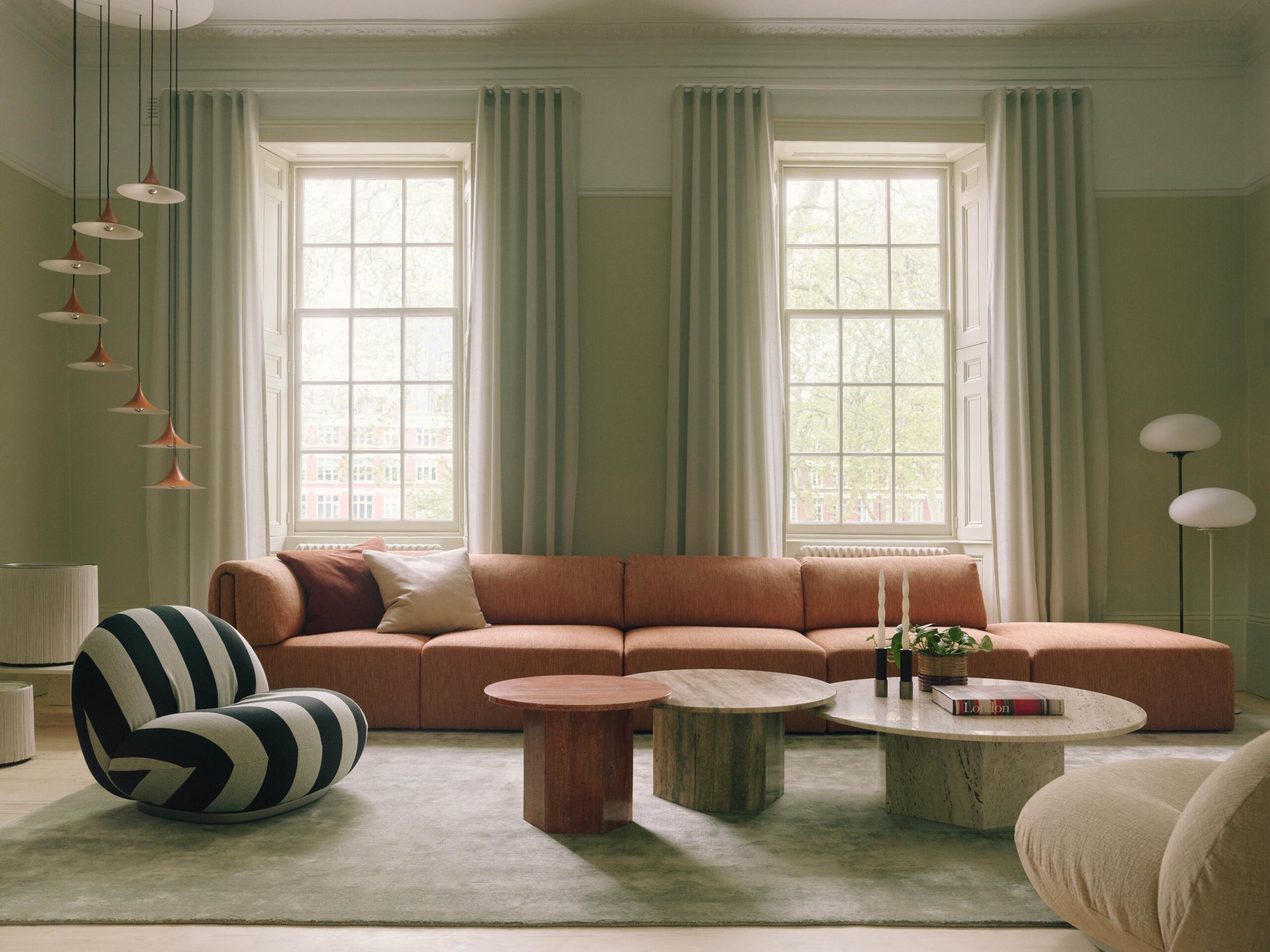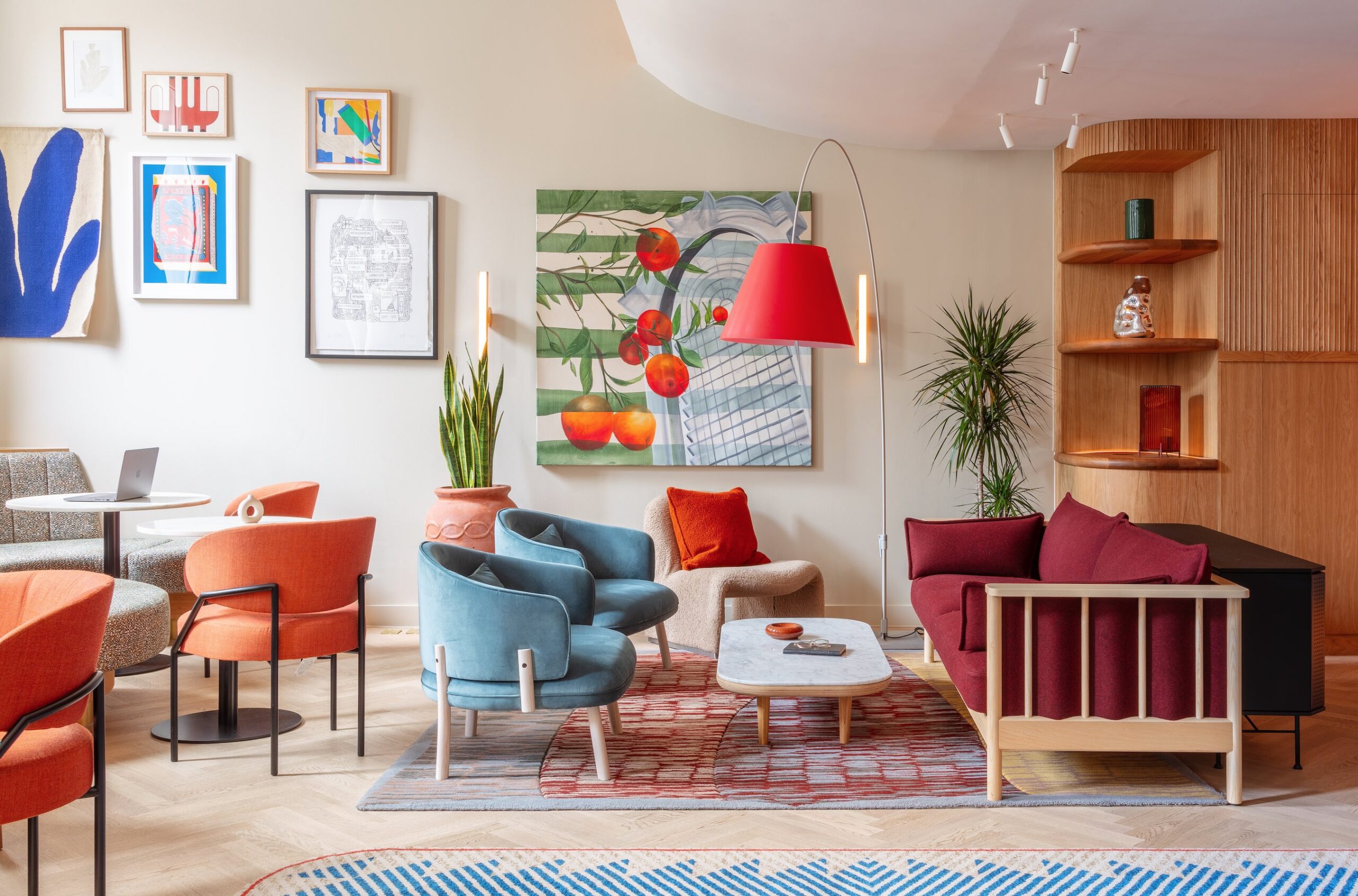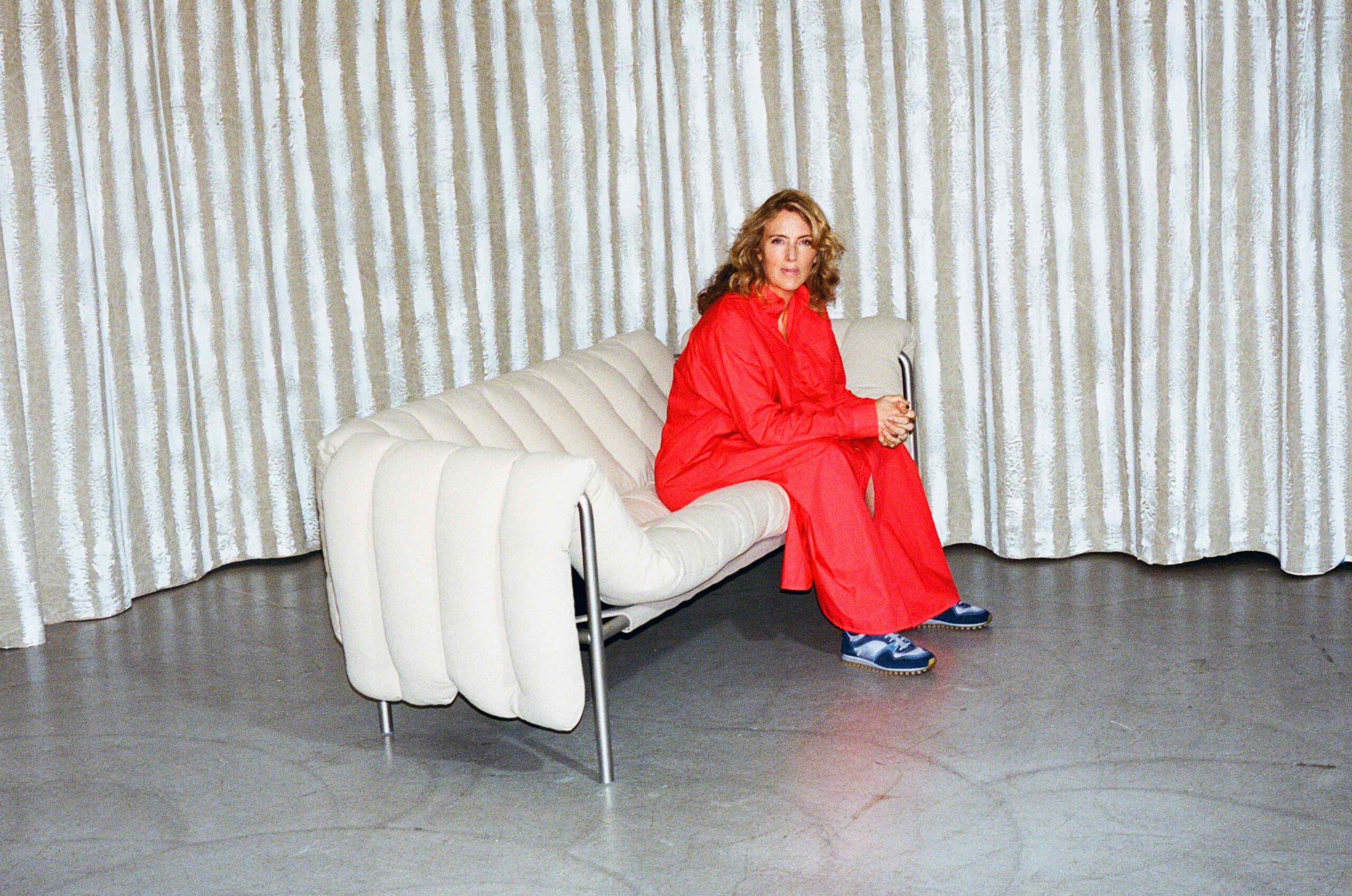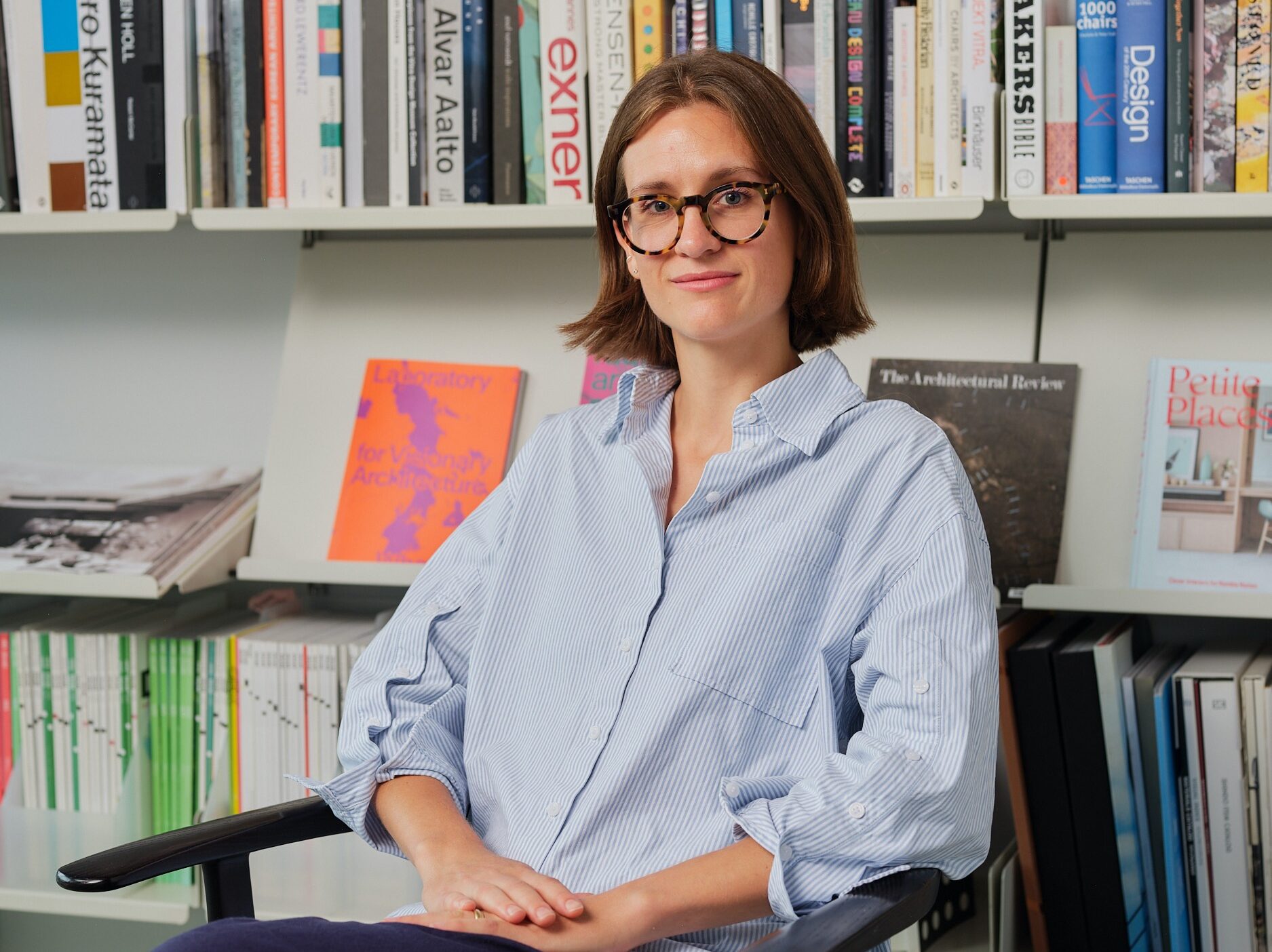 ||
||
Floor-level seating might suggest that comfort is falling down the pecking order, but Hitch Mylius’ latest taps into a trend that you’re probably too old to understand
I’m standing in Hitch Mylius’s prototype room in its Enfield factory and I have to confess I’m ever-so-slightly flummoxed. In front of me is a small landscape of interlocking, upholstered shapes. A couple are intuitive enough – there are places to sit and others to lean on and use your laptop while standing. But I can’t quite grasp one piece with an upholstered base.
As the three people I’ve come to meet – Hitch Mylius directors Ian Ashley and Robin Phillips, and the (very) young French designer of these pieces, Timothée Mion – introduce themselves and start explaining the project’s background, I’m wracking my brains trying to work out what it could be used for. You aren’t meant to stand on it surely? Finally, it dawns. You sit on it!
Hitch Mylius isn’t the first manufacturer to work with the floor. At the Salone in 2010, for instance, Vitra exhibited a textile strap, designed by the Chilean architect Alejandro Aravena, which was based on a version used by the Ayoreo Indians. It took the pressure off the back and thighs, making sitting on the ground easier, and in that particular context worked rather well as a fun antidote to the acres of furniture on show.
Launching this May (it’s so new the company hasn’t yet decided on the price), the hm221 started life as a student project at Central Saint Martins. Hitch Mylius set a brief that asked participants, in the words of Phillips, to “think about workplaces and look at how furniture isn’t just sofas any more”. They also wanted them to consider “the way people sit and how technology plays a part in the way people work”.
The students were shown around the company’s factory to get a sense of its visual language, and ultimately five were chosen to make full-sized pieces. In the end, Hitch Mylius liked Mion’s design so much that it put it into production.
“At the end of the day people still want sofas and chairs, but if we only do that, then people will get a bit bored. We need to try new things,” says Ashley.
Since its founding in 1971, Hitch Mylius has done a wonderful line in simple but refined geometric sofas and chairs, such as the hm17 and hm18, but it can also spring surprises.
In 1998 it launched the hm61 Oxo sofa – designed by Nigel Coates and first seen at the futuristic
Oyster House at the Ideal Home Show – whose organic shapes locked together. Subsequently, Simon Pengelly designed the hm83 star-shaped benches for public areas, while Mion’s work undoubtedly bears some relationship to the wedge-shaped, interlocking hm77 seats by Kazuko Okamoto.
This is another one of those products trying to persuade us not to sit in one position for too long. The idea of using the floor came to Mion when he watched how students around CSM behaved. So is this a case of a student designing for other students?
Well, possibly. It isn’t the most elegant way for a man of a certain age with distinctly stiff knees to sit, and neither would I advise you to attempt this wearing a pencil skirt. The fact that a couple of the units are double sided, so they can’t back on to a wall, may also be an issue for some.
However, it is unquestionably tapping into the workplace zeitgeist that seems to eschew comfort in favour of movement. Ashley reckons it could work well in education as well as office settings, where universities are increasingly using design and contemporary furniture to lure in fee-paying students. In which case it makes perfect sense for a recent graduate to be making furniture for people his own age and with his proclivities.
And do you know what? Despite my initial confusion, I like it. Made from a combination of timber, foam and virtually any fabric you fancy, it’s simple and sculptural, and, pitched in the right setting – and to the right demographic – may well prove to be genuinely functional.



















